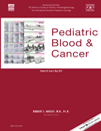Reduced bone mineral density in adult patients with Langerhans cell histiocytosis†
Conflict of interest: Nothing to declare.
Abstract
This retrospective study evaluated bone mineral density (BMD) and bone turnover in adults with LCH. Twenty-five adult patients and 25 matched controls were evaluated with BMD measurement and indices of bone metabolism. A BMD value below the expected range for age (Z-score ≤ − 2.0) was found in 20% of patients; in particular, all postmenopausal women and men over 50-years had either osteoporosis or osteopenia. Patients with active disease had significantly lower Z-scores compared to patients with inactive disease and controls. Reduced bone turnover was found in all 14 patients treated with chemotherapy. No fractures due to osteoporosis were identified during 305.15 patient-years of follow-up. Pediatr Blood Cancer 2012; 58: 819–822. © 2011 Wiley Periodicals, Inc.




